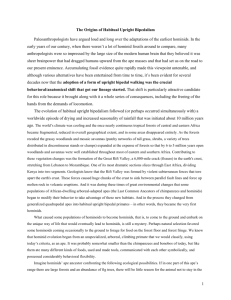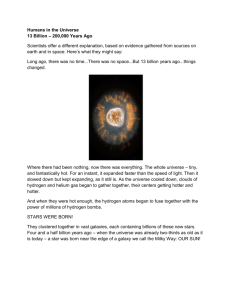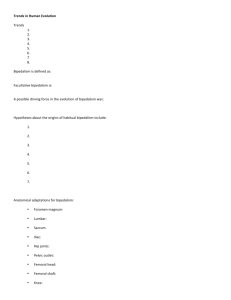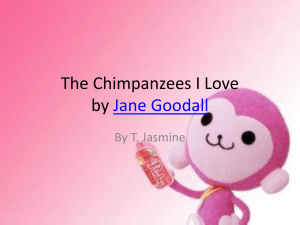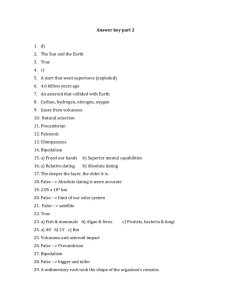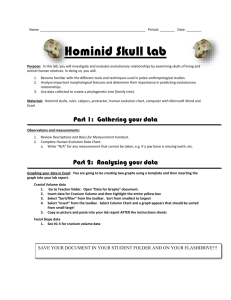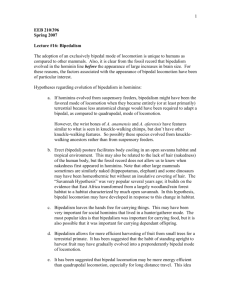Outline 21
advertisement
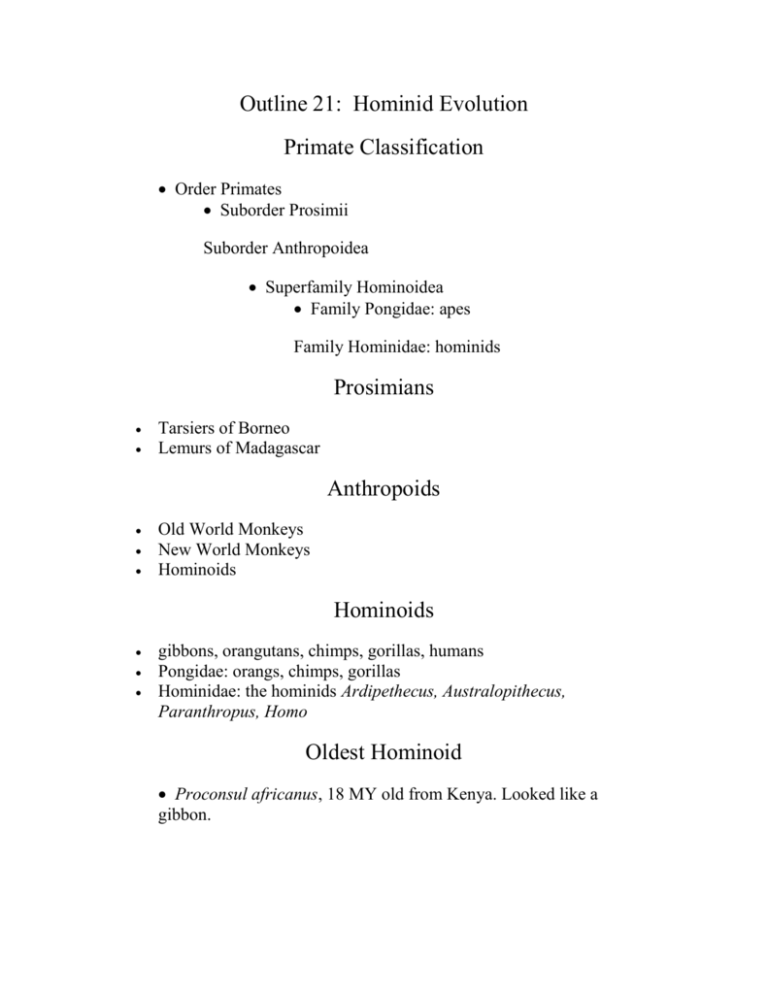
Outline 21: Hominid Evolution Primate Classification Order Primates Suborder Prosimii Suborder Anthropoidea Superfamily Hominoidea Family Pongidae: apes Family Hominidae: hominids Prosimians Tarsiers of Borneo Lemurs of Madagascar Anthropoids Old World Monkeys New World Monkeys Hominoids Hominoids gibbons, orangutans, chimps, gorillas, humans Pongidae: orangs, chimps, gorillas Hominidae: the hominids Ardipethecus, Australopithecus, Paranthropus, Homo Oldest Hominoid Proconsul africanus, 18 MY old from Kenya. Looked like a gibbon. Timing of Lineage Splitting on the way to Humans Based on DNA studies Old World monkeys: 33 MY gibbons: 22 MY orangs: 16 MY gorillas: 8 MY chimps: 7 MY Genetic Differences humans - chimps: 1.2% humans - gorillas: 1.4% chimps - gorillas: 1.2% humans - orangs: 2.2% Origin of Hominids What differentiates hominids from apes? This is what evolved first. Large brain? Bipedalism? Origin of Hominids Early hominid brains were the same size as modern chimps. Bipedalism evolved before large brains. In fact, it was bipedalism that allowed the evolution of large brains by freeing the hands for tool use. Origin of Bipedalism Thought to be associated with climatic change 5 MY as spreading glaciers caused global cooling. Global cooling created a drier Africa with fewer rain forests and more savannahs. Origin of Bipedalism Earliest hominids were forced to travel between isolated forests if food was in short supply. This produced selection pressure for upright walking. Origin of Large Brains Associated with selection pressure for tool use. Tools to find more food or defend against predators. Bipedalism freed the hands for extensive tool use, and for carrying helpless babies. Origin of Large Brains: Neoteny Neoteny: an evolutionary/genetic process A slowing of developmental rates while growth continues normally. Developmental stages are reached at a later stage or not at all. Consequences of Neoteny Helpless babies Walk later Extended juvenile period Prolonged period of learning Later puberty Longer life span Consequences of Neoteny large brain and cranium small face, jaws, and teeth: impacted wisdom teeth naked skin, hair mostly on head form of external ear Mosaic Evolution Neoteny does not affect all parts of the body equally. Some parts are like juveniles, others like adult apes. We have retained some juvenile features yet have reached sexual maturity. Hominid Brain Sizes Chimps: 350 cc A. afarensis: 400 cc A. africanus: 450 cc H. habilis: 800 cc H. erectus: 1000 cc average H. sapiens: 1500 cc average
